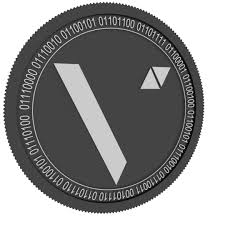Veltor (VLT): A Fast and Secure Cryptocurrency for Transactions
Table of Contents

Veltor is a Mineable Token. Are you curious about expanding your crypto portfolio with other mineable tokens or alternative coins? At Niftyfinances, you’ll find in-depth information, guides, and the latest updates on various promising crypto projects. Whether you’re a miner or an enthusiast looking for unique opportunities, Niftyfinances is your go-to platform to discover what’s next in decentralized finance!
Veltor (VLT) is an innovative cryptocurrency designed for fast, secure, and efficient transactions. With a focus on minimalism and high-speed verification, VLT aims to offer a seamless payment experience. But how does it stand out from other cryptocurrencies? In this guide, we’ll explore its core features, mining potential, market performance, and future outlook.

What is Veltor VLT?
Veltor (VLT) is a cryptocurrency designed with a focus on speed, security, and efficiency. It aims to provide users with a lightweight and streamlined blockchain experience by minimizing transaction delays and enhancing cryptographic security. Unlike many traditional cryptocurrencies, Veltor positions itself as a more agile alternative that prioritizes simplicity and performance.
Core Philosophy: Lightweight, Fast, and Secure Transactions
The core philosophy behind Veltor revolves around three key aspects:
- Lightweight Design: Veltor is built with an optimized blockchain structure that reduces unnecessary data bloat, ensuring faster synchronization and lower storage requirements.
- Fast Transactions: With an emphasis on efficiency, Veltor is designed to process transactions quickly, making it suitable for real-time payments and financial applications.
- Enhanced Security: The cryptocurrency incorporates advanced cryptographic techniques to prevent double-spending and ensure network integrity, providing users with a secure environment for transactions.
Comparison with Similar Cryptocurrencies
Compared to other cryptocurrencies, Veltor distinguishes itself through its focus on minimalism and efficiency:
- Bitcoin (BTC): While Bitcoin is the pioneer of cryptocurrencies, it faces challenges with transaction speed and scalability. Veltor, on the other hand, aims to resolve these issues by maintaining a more compact and efficient blockchain.
- Litecoin (LTC): Litecoin is known for its faster block generation time compared to Bitcoin. Veltor takes this a step further by focusing on ultra-lightweight transactions, making them even more efficient.
- Dash (DASH): Dash emphasizes privacy and instant transactions. While Veltor does not primarily focus on anonymity, it shares the goal of speed and efficiency in financial transactions.
Veltor (VLT) presents itself as a practical and efficient cryptocurrency designed for users who prioritize transaction speed and security while avoiding the complexity and inefficiencies found in larger blockchain networks.n improved experience for users who prioritize speed, security, and cost-effectiveness.
Key Features
With these features, Veltor (VLT) aims to establish itself as a high-performance digital currency, addressing key issues faced by traditional cryptocurrencies while offering a seamless and efficient payment solution.
1. High-Speed Transactions: Near-Instant Payments
Veltor is designed for rapid transaction processing, making it one of the fastest cryptocurrencies available. By utilizing an optimized blockchain structure, Veltor minimizes transaction confirmation times, ensuring near-instant payments. This speed advantage makes it ideal for both everyday transactions and business use cases where quick settlements are crucial.
2. Enhanced Security: Robust Blockchain Protocols
Security is a core focus of Veltor’s blockchain design. It incorporates advanced cryptographic techniques to prevent fraudulent activities, ensuring that all transactions remain safe from double-spending and cyber threats. By leveraging decentralized consensus mechanisms, Veltor maintains a secure and trustless financial ecosystem.
3. Low Fees: Cost-Effective Transfers
One of the key benefits of Veltor is its low transaction fees, which make it an attractive alternative to traditional financial systems and even many other cryptocurrencies. By reducing network congestion and optimizing transaction validation, Veltor offers users a cost-effective method for transferring funds. This feature is particularly beneficial for microtransactions and cross-border payments.
4. Scalability: Designed for Future Growth
Veltor is built with scalability in mind, ensuring that its network can accommodate a growing number of users without compromising speed or security. Future developments may include improvements in blockchain efficiency, smart contract capabilities, and enhanced interoperability with other digital assets, making Veltor a strong candidate for wider adoption in the evolving cryptocurrency landscape.

How to Buy and Store Veltor (VLT)
As a digital asset, acquiring and securely storing Veltor (VLT) requires a clear understanding of available exchanges, wallet options, and security best practices. Below is a guide to help you purchase and manage your VLT holdings effectively.
List of Exchanges Where VLT Is Available
Veltor (VLT) may be listed on various cryptocurrency exchanges that support lesser-known or emerging digital assets. When looking for an exchange, consider the following:
- Centralized Exchanges (CEXs): Some traditional exchanges might list VLT, allowing users to trade with fiat or other cryptocurrencies.
- Decentralized Exchanges (DEXs): If Veltor operates on a compatible blockchain, decentralized exchanges might provide trading opportunities without requiring intermediaries.
- P2P and Swap Platforms: Some platforms facilitate direct transactions between users or instant swaps between cryptocurrencies.
Since exchange listings can change frequently, it is advisable to check reliable sources such as CoinMarketCap or CoinGecko for the latest availability.
Choosing the Right Wallet for Storing VLT
Once you acquire Veltor (VLT), storing it securely is crucial. The right wallet depends on your preferences for security, accessibility, and convenience:
- Official Wallet: If Veltor has an official wallet developed by its team, it is often the safest and most compatible option.
- Hardware Wallets (Cold Storage): Devices like Ledger or Trezor provide offline storage, protecting assets from cyber threats.
- Software Wallets (Hot Storage): Desktop, mobile, or web-based wallets offer easy access but require strong security measures.
- Paper Wallets: Printing your private keys and storing them offline can enhance security but requires careful handling.
Always choose a wallet that supports VLT’s blockchain and allows for secure private key management.
Security Tips for Holding and Transferring Veltor
To ensure the safety of your VLT holdings, follow these best practices:
- Enable Two-Factor Authentication (2FA): If using an exchange or online wallet, activate 2FA to add an extra layer of security.
- Use Strong Passwords: Secure your wallet with a unique, complex password and store it safely.
- Backup Your Wallet: Regularly save a backup of your wallet’s private keys or seed phrases in a secure offline location.
- Verify Addresses Before Transfers: Always double-check recipient addresses before sending VLT to avoid loss of funds.
- Keep Software Updated: Ensure your wallet software and security tools are up to date to protect against vulnerabilities.
By following these steps, you can securely buy, store, and manage Veltor (VLT) while minimizing risks associated with cryptocurrency transactions.

Mining Veltor (VLT): How It Works
Mining Veltor (VLT) involves validating transactions and securing the blockchain network by solving cryptographic puzzles. Miners contribute computing power to process transactions and, in return, receive VLT as a reward. Below is a comprehensive guide on the mining mechanism, necessary hardware and software, and strategies to maximize mining efficiency.
Explanation of the Mining Mechanism Used by VLT
Veltor (VLT) utilizes a Proof-of-Work (PoW) consensus mechanism, meaning miners compete to solve complex mathematical problems to add new blocks to the blockchain. The first miner to find a valid solution gets rewarded with a newly minted VLT.
- Hashing Algorithm: VLT operates on a specific hashing algorithm (e.g., SHA-256, Scrypt, or another PoW variant), which determines the type of hardware required.
- Block Time & Reward: The blockchain is structured to add new blocks at a fixed interval, with miners receiving block rewards for successful validation.
- Difficulty Adjustment: The mining difficulty adjusts periodically to maintain a stable block production rate based on network participation.
Required Mining Hardware and Software
To mine Veltor (VLT) efficiently, selecting the right hardware and software is crucial:
- Mining Hardware:
- ASIC Miners: If VLT uses a common PoW algorithm like SHA-256 or Scrypt, ASIC (Application-Specific Integrated Circuit) miners provide the highest efficiency.
- GPU Mining: If Veltor is GPU-minable, high-performance graphics cards (NVIDIA or AMD) can be used.
- CPU Mining: Some PoW cryptocurrencies allow CPU mining, but it is generally less profitable than GPU or ASIC mining.
- Mining Software:
- CGMiner or BFGMiner (for ASIC mining)
- NBMiner or T-Rex (for GPU mining)
- XMRig or CPUMiner (for CPU mining, if applicable)
- Mining Pools: Most software can connect to mining pools for better rewards.
Mining Pools vs. Solo Mining: Pros and Cons
Miners can choose between solo mining or joining a mining pool, each with advantages and disadvantages:
| Mining Method | Pros | Cons |
|---|---|---|
| Solo Mining | Full block rewards, complete control over mining operations | Highly competitive, unpredictable earnings, requires significant hash power |
| Mining Pool | Consistent payouts, shared workload, lower hardware requirements | Pool fees, rewards split among participants, reliance on pool operators |
For most miners, joining a pool is the preferred option, as it provides steady returns despite lower individual rewards.
Tips for Optimizing Mining Efficiency and Profitability
To maximize VLT mining efficiency and profitability, consider the following:
- Choose the Right Mining Equipment: Invest in high-performance GPUs or ASICs with the best hash rate and energy efficiency.
- Optimize Power Consumption: Reduce electricity costs by using energy-efficient hardware and running miners in locations with lower power rates.
- Join a Reliable Mining Pool: Look for pools with low fees and high payout reliability to ensure stable income.
- Maintain Proper Cooling: Overheating reduces mining performance and hardware lifespan; ensure adequate cooling with proper ventilation.
- Keep Software and Drivers Updated: Regular updates improve mining efficiency, security, and compatibility with the latest mining protocols.
- Monitor Market Conditions: Mining profitability depends on VLT’s market price and network difficulty—adjust strategies accordingly.
Security and Decentralization in Veltor (VLT)
Veltor (VLT) is designed to offer a secure and decentralized digital transaction system. Its blockchain network employs advanced cryptographic techniques to protect user funds and maintain trust. Decentralization ensures network resilience, while robust security measures prevent common blockchain threats like double-spending and 51% attacks.
Cryptographic Techniques Used to Secure the Network
Veltor (VLT) integrates cryptographic mechanisms to ensure data integrity, authentication, and security:
- Public-Key Cryptography (PKC): Transactions use asymmetric encryption, where a private key is required to authorize payments, and a public key is used to verify transactions.
- Hashing Algorithm: Each transaction is hashed using a secure cryptographic function, ensuring immutability and preventing data manipulation.
- Proof-of-Work (PoW) Consensus: Miners solve complex cryptographic puzzles to validate transactions, making the network resistant to fraud.
- Digital Signatures: Each transaction is signed by the sender’s private key, preventing unauthorized modifications and ensuring authenticity.
These techniques work together to secure the network, preventing unauthorized access and ensuring transaction validity.
How Decentralization Strengthens VLT’s Ecosystem
Decentralization is a core principle of Veltor’s blockchain, offering key benefits:
- Distributed Ledger: No central authority controls the network, reducing the risk of censorship and manipulation.
- Global Mining Participation: A broad distribution of miners ensures no single entity dominates the network.
- Fault Tolerance: The network remains operational even if some nodes go offline, making it resilient against failures and attacks.
- Transparency and Trust: All transactions are publicly recorded on the blockchain, increasing trust among users.
By maintaining a decentralized structure, Veltor enhances security, reliability, and user confidence in its financial ecosystem.
Preventing Double-Spending and 51% Attacks
Double-spending and 51% attacks are significant risks in blockchain networks, but Veltor implements strong countermeasures:
- Double-Spending Protection:
- Transactions require multiple confirmations before being finalized.
- Miners validate transactions based on PoW consensus, ensuring each transaction is legitimate.
- The blockchain structure prevents users from altering previous transactions once they are confirmed.
- Mitigating 51% Attacks:
- The network relies on a widely distributed mining community, making it difficult for a single entity to control over 50% of the total hash rate.
- Difficulty adjustment mechanisms help prevent malicious actors from gaining excessive influence.
- Strong network participation and frequent block updates further secure the chain against hostile takeovers.
Veltor’s Efficiency and Scalability
Veltor (VLT) is designed to be a lightweight, fast, and scalable cryptocurrency. By optimizing its blockchain structure and transaction validation process, VLT ensures efficient network performance. This section explores how Veltor maintains a lightweight blockchain, its transaction speeds compared to other cryptocurrencies, and potential future scalability improvements.
How VLT Maintains a Lightweight Blockchain
A lightweight blockchain is essential for faster transaction processing and reduced storage requirements. Veltor achieves this through:
- Optimized Block Structure: Blocks are designed to store essential transaction data efficiently, minimizing unnecessary bloat.
- Efficient Consensus Mechanism: The Proof-of-Work (PoW) model ensures only valid transactions are included in blocks without excessive computational overhead.
- Pruned Blockchain Approach: Old transaction data can be trimmed without affecting network integrity, reducing storage needs for full nodes.
- Compact Transactions: VLT’s transaction format is optimized to reduce data size, improving processing speed and efficiency.
These optimizations allow Veltor to remain lightweight, making it easier for nodes to participate and maintain decentralization.
Transaction Speeds Compared to Other Cryptocurrencies
Transaction speed is a crucial factor in a cryptocurrency’s usability. Veltor’s network is optimized for fast confirmations, enabling near-instant payments. Here’s how it compares with other well-known cryptocurrencies:
| Cryptocurrency | Average Transaction Time | Block Time |
|---|---|---|
| Veltor (VLT) | Few seconds to 1 minute | Fast block intervals |
| Bitcoin (BTC) | 10-60 minutes | 10 minutes |
| Ethereum (ETH) | 1-5 minutes | 12-15 seconds |
| Litecoin (LTC) | 2-5 minutes | 2.5 minutes |
Veltor’s optimized block time allows for significantly faster transactions than Bitcoin and Litecoin, making it a viable option for real-world transactions and payments.
Future Scalability Plans for the Veltor Network
To ensure long-term network efficiency and support increased adoption, Veltor’s scalability strategies may include:
- Layer-2 Solutions: Implementing off-chain processing mechanisms such as payment channels or sidechains to handle more transactions with lower fees.
- Adaptive Block Size: Dynamically adjusting block sizes based on network activity to accommodate higher transaction volumes.
- Enhanced Mining Optimization: Upgrading the PoW algorithm or introducing hybrid consensus models to balance security and efficiency.
- Sharding Techniques: Dividing the blockchain into smaller, manageable parts to enable parallel processing of transactions.
Veltor (VLT) Market Performance and Adoption
Veltor (VLT) is a cryptocurrency designed for fast and secure transactions. Its market performance is influenced by several factors, including historical price trends, liquidity, and adoption. Understanding these aspects can help investors and users assess its potential growth and sustainability.
Historical Price Trends and Volatility Analysis
Like most cryptocurrencies, Veltor has experienced price fluctuations due to market sentiment, adoption, and external economic conditions. Key factors affecting VLT’s price trends include:
- Initial Market Performance: VLT’s early trading phases may have seen price volatility due to limited liquidity and speculative trading.
- Market Cycles: Cryptocurrencies often follow bullish and bearish cycles influenced by broader crypto market trends. VLT’s price movements likely align with these cycles.
- Trading Volume Trends: Analyzing historical trading volume can indicate periods of high and low investor interest.
- Volatility Analysis: Compared to established cryptocurrencies, VLT may have higher volatility due to its lower market capitalization and liquidity constraints.
Tracking VLT’s price history can provide insights into potential future performance, helping traders and investors make informed decisions.
Liquidity and Market Capitalization Overview
Liquidity and market capitalization are essential indicators of a cryptocurrency’s stability and usability:
- Market Capitalization: VLT’s total market cap is determined by its circulating supply multiplied by its current price. A higher market cap generally indicates greater adoption and stability.
- Liquidity Factors: The ability to buy and sell VLT with minimal price impact depends on its trading volume and exchange support.
- Exchange Listings: VLT’s availability on major exchanges directly affects its liquidity. More exchange support leads to better price discovery and lower spreads.
- Trading Pairs: The presence of VLT trading pairs with stablecoins (e.g., USDT) or major cryptocurrencies (e.g., BTC, ETH) can enhance liquidity.
Monitoring these metrics can help users gauge the ease of trading and investing in Veltor.
Veltor (VLT) stands out as a fast, efficient, and secure cryptocurrency designed for seamless transactions. With its lightweight blockchain and strong cryptographic foundation, VLT offers unique advantages. Whether you’re interested in mining, trading, or long-term holding, understanding its technology and market potential is essential. Stay informed and explore the future of Veltor!